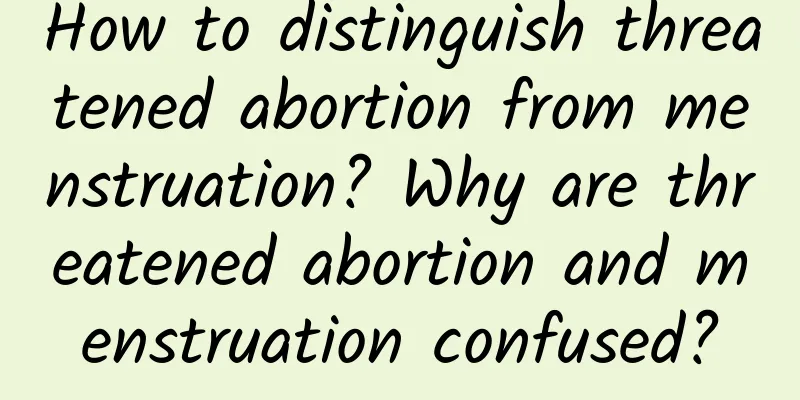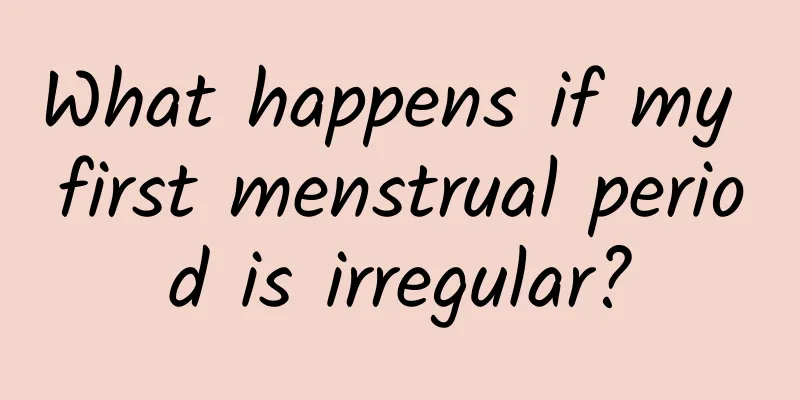How to distinguish threatened abortion from menstruation? Why are threatened abortion and menstruation confused?

|
Some people are careless and think that they have their menstrual period when they have a threatened miscarriage. Indeed, both threatened miscarriage and menstruation involve bleeding. How to distinguish threatened miscarriage from menstruation? What are the symptoms of threatened miscarriage? Why are threatened miscarriage and menstruation confused? Indeed, some women cannot tell the difference between threatened abortion and menstruation. Here we popularize the basic definitions of threatened abortion and menstruation. Threatened abortion is one type of abortion, which manifests as a small amount of vaginal bleeding, as well as low back pain and lower abdominal pain. In addition to threatened abortion, abortion also includes incomplete abortion, complete abortion and inevitable abortion. Incomplete abortion means that the fetus has been expelled after inevitable abortion, but part or all of the placenta remains in the uterine cavity; complete abortion means that the fetus and placenta have been completely expelled, bleeding has stopped, and abdominal pain has disappeared; inevitable abortion is a further development of threatened abortion, the amount of vaginal bleeding far exceeds the amount of threatened abortion and menstruation, and the lower abdominal cramps are aggravated. Menstruation is an old friend of women. Normally, it comes once a month, with a cycle of about 28 days. Each cycle lasts for 3 to 5 days, and the total menstrual volume in the cycle ranges from 20 to 50 ml. During menstruation, breast development, back pain, tension and anxiety, lower abdominal distension and other discomforts often occur. How to distinguish threatened abortion from menstruation? The symptoms of threatened abortion and menstruation are partially the same and can be easily confused. The difference between threatened abortion and menstruation can be determined by the menstrual volume, discharge, and duration of symptoms. The amount of bleeding in threatened abortion is less than that in regular menstruation, and the abdominal pain is mild or almost absent, and the symptoms disappear after rest treatment. However, the amount of bleeding in menstruation is moderate, with more bleeding in the first three days and less bleeding afterwards. Those with dysmenorrhea will have severe abdominal pain, which may not be relieved by rest, and painkillers are needed for treatment. The most important difference between the two is that one is pregnant and the other is not. It can be determined by checking blood and urine HCG. Threatened abortion is what we often call pregnancy spotting. |
<<: What are the drugs for treating candidal vaginitis? How to treat candidal vaginitis?
>>: Can habitual miscarriage be cured? How to take care of habitual miscarriage after pregnancy?
Recommend
Experts analyze the common causes of dysmenorrhea for you
Dysmenorrhea is a gynecological disease that occu...
Dietary considerations for irregular menstruation
Irregular menstruation is one of the most common ...
How to perform abortion surgery for scar pregnancy? This article will show you how
Scar pregnancy abortion surgery also needs to be ...
Initial diagnosis of threatened abortion
In life, if your friends or family members experi...
What are the main causes of ectopic pregnancy?
Among the many gynecological diseases of women, t...
What should I do if I often have urinary urgency and unbearable pain in the lower abdomen during menstruation?
What should I do if I have dysmenorrhea and often...
Is your butt getting bigger the more you sit? 6 tips to keep you away from obesity caused by prolonged sitting
Whether you are going to work or studying for exa...
Which women are prone to pelvic peritonitis?
Which women are prone to pelvic peritonitis? Poor...
What foods can I eat to eliminate uterine fibroids?
What foods can I eat to eliminate uterine fibroid...
Can anger cause miscarriage? Let's take a look
Pregnant women are prone to mood swings during pr...
What causes pelvic inflammatory disease?
Pelvic inflammatory disease is a common reproduct...
What are the effects of a 2mm uterine fibroid? Will a 2mm uterine fibroid disappear on its own?
With the advancement of modern medical technology...
Cervical precancerous lesions go to hospital for treatment
Cervical precancerous lesions are the malignant t...
Protruding belly and skyrocketing weight, beware of false hunger and learn 6 ways to overcome it
Are you always troubled by the circles of fat on ...
Women can prevent pelvic inflammatory disease by practicing abdominal exercises regularly
To prevent pelvic inflammatory disease, women can...









